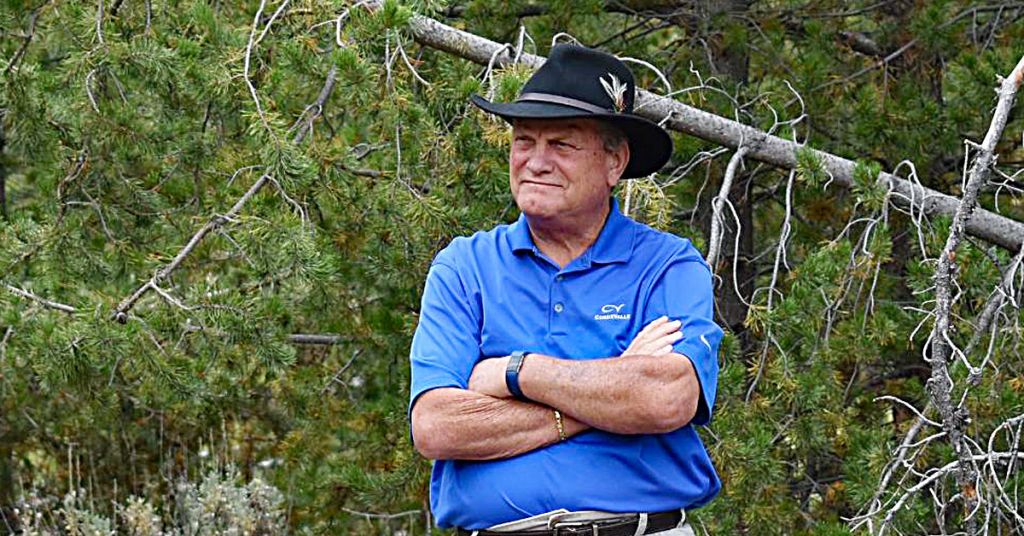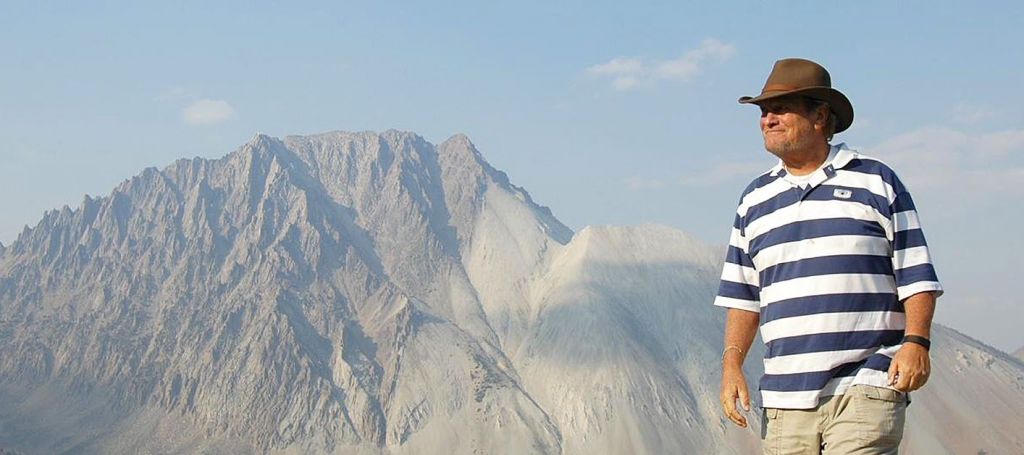In an exclusive interview with Columbia Insight the Idaho Republican talks dams, Dems, the BPA, Salmon Wars and re-election

Snake charmer? Idaho Rep. Mike Simpson unveiled a controversial plan to breach four dams along the Lower Snake River. The goal is to end what he calls “the Salmon Wars.” Courtesy of Office of Rep. Mike Simpson
By Charles Coxe. February 25, 2021. When Idaho Congressman Mike Simpson publicly called for breaching four Lower Snake River dams on February 7 as part of his Energy & Salmon Concept, public reaction, it’s fair to say, was shock. And although Simpson certainly heard the swift criticism of his plan, voices as wide-ranging as tribes, environmental groups, energy interests and farmers were quick to praise his proposal for its collaborative spirit and attempt to find compromise solutions—something not heard much out of Washington nowadays.
As soon as the plan was released, Columbia Insight wanted to hear more from the 12-term Republican representative about why the Snake River dams issue is so important to him, and what his plan’s chances for passage into law really are.
Columbia Insight: It’s been about two weeks since you released your Energy & Salmon Plan. How do you feel about the response so far?
Mike Simpson: I have to say it’s about what we expected. We knew there would be people who would say “Hell no!” to start with, other people who would be excited about the concept and a lot of others who for now are really sitting back and want to look through the proposal and think more about it.
CI: What’s surprised you about the reaction?
MS: What’s really been interesting is seeing that the people who are opposed to this proposal tend to focus on only one aspect of the plan: dam removal. That’s all they hear, and then they shut down.
My staff and I, we’ve been working on this plan over three years and have had more than 300 different meetings about it, so we’ve heard a lot of different points of view. And we’ve had a lot of discussions and collaborative groups on these issues in the region over the past 25 to 30 years. Every collaborative group over that time has come up with nice ideas that everybody can agree on: increasing the numbers of salmon, clean renewable energy, better efficiency, improving habitats, etc. But when it comes down to breaching the dams themselves, the groups break apart and they just can’t go any further. Fundamentally, the people who are opposed to breaching the dams are used to doing things a certain way, and just don’t want to change what they’re doing.

Hardened positions: Simpson’s plan would breach the four Snake River dams starting with Ice Harbor dam and moving east (red dots indicate dams). Courtesy of U.S. Army Corps of Engineers
“OK then,” I said, “if you don’t like breaching the dams and still want to save the salmon, then tell me what your plan is?” And then there’s nothing—because everything else we’ve tried for the past 25 to 30 years simply doesn’t work. We’ve already spent $17 billion on fish recovery and salmon and steelhead numbers here have only gotten worse, to the point where they’re on a clear path to extinction. Are we going to spend $20 billion more over the next 30 years just to have them go extinct anyway?
CI: Some environmental groups have been supportive of your plan—American Rivers in particular released a statement calling it “bold,” “groundbreaking” and “potentially transformational” for the Pacific Northwest. Others have been more cautious, surprised to hear an environmental issue supported by a conservative Republican. Is that unfair?
MS: Well, most people live in Idaho because we love our environment—and that’s really true all across the Pacific Northwest. Yes, I’m conservative, and I also value conservation.
The salmon are going extinct. There’s just no way around that. We have to do something about it. To me, this proposal isn’t about the impact that it has on us today. It’s what do we want the Pacific Northwest to look like in the next 30, 40, 50 years? The decisions we make today will have an enormous impact on the entire region 50 years from now.
I don’t want our grandchildren someday to say, “Why do you call it the Salmon River? There are no salmon here.”
MORE: Thermal hopscotch: How Columbia River salmon are adapting to climate change
CI: Where do you anticipate the greatest opposition coming from?
MS: Oh, there’s plenty of opposition to the concept. There are a lot of organizations that will have to change the way they’re doing things. But this is really the first time that a plan acknowledges the important fact that these dams do have considerable value to a wide range of stakeholders—that’s why the plan will cost an estimated $35 to $40 billion. We have to acknowledge the dams’ value, acknowledge everything that they provide for different groups, and consider that for all of the different stakeholders.
What’s it going to cost to make those stakeholders whole? The states? The BPA? The tribes? The farmers? What’s it going to cost to help those grain farmers get their grain down to Portland cheaply, as they can do now by barge without being beholden to trucking or rail? What’s it going to cost to get that clean energy supply replaced before the dams are breached? And it has to be firm power, not just vague plans of future wind turbines. Each of those is a challenge we have to consider.

Mountains man: In 2015, President Barack Obama signed into law legislation created by Simpson designating Idaho’s Boulder-White Clouds Wilderness (pictured) for protection. The same act created the state’s Jim McClure-Jerry Peak Wilderness. Courtesy of Office of Rep. Mike Simpson
CI: Speaking of the Bonneville Power Administration, how have they reacted to your plan?
MS: We’ve discussed the concept with them along the way. Really, this proposal started from talking with them. The BPA was having financial difficulties and they still are—the problem is they are not the cheapest power in the Pacific Northwest anymore. Rural electrics will be looking outside of the BPA to buy their power to be able to get it more cheaply. So how can we make them more secure in the future, make them whole—and do something to save salmon at the same time?
The BPA gets sued every other day by different interests in the Salmon Wars, as I call them. Now the BPA obviously can’t just come out and support the removal of their dams—but we can help to make them whole, to make dam removal make sense by replacing that power. The plan calls for $10 billion in funding for clean energy projects like battery storage, pump storage, hydrogen storage, small modular reactors, increased transmission capacity, increased energy efficiency, new wind and solar power or other new technologies determined by the BPA and the Northwest Power and Conservation Council. We have to look at all of the options and likely use lots of them.
The other thing we’ve done with this proposal that many people have overlooked is that we’ll automatically relicense all FERC-licensed dams in the Columbia River Basin greater than 5 megawatts for 35 to 50 years. This is to prevent the “slippery slope” argument that if we remove these four dams, then they’ll just go after the other ones. We have to keep those other dams and their energy secure—and put a stop to the fish-related, not safety, litigation around them—so they can continue to be reliable sources of energy going forward.
MORE: The return of Clearwater River coho
CI: Why is this concept so important to act on now?
MS: I really don’t think we have long to save the salmon before they go extinct. We’ve been managing a steady decline in salmon runs for decades. I hear some people say, “To heck with the salmon—just let them go extinct.” But I don’t. We have to act now.

Headed for extinction? Lower Monumental Dam is one of four dams along the Snake River environmentalists have called “fish-killing machines.” Photo by U.S. Army Corps of Engineers
And the stars are actually aligned for us to do something about this. The Pacific Northwest delegation in Congress is in a stronger position now than they have been in years. And President Biden has discussed prioritizing a big infrastructure and clean energy stimulus push that could be in the $2-to-3-trillion-dollar range. We have a real opportunity here, all of the different stakeholders, to roll up our sleeves and come together to find a solution to this problem on our own terms, rather than letting someone else decide our fate.
CI: Right now this plan is still a concept, as you call it. What are the next steps to get this hammered into actual legislation that can be put before committees and eventually onto the floor for a vote?
MS: Well, now that a lot of different people are looking at the concept and thinking about it, the next step is that we have to listen to their different perspectives. We have to talk with them about what the plan does and doesn’t do, answer their questions and take their concerns into consideration before drafting legislation. But that needs to happen now. We don’t have a lot of time. I’d like to see actual legislation happen later this year.
CI: Oregon Senator Ron Wyden just released his own sweeping River Democracy Act (with fellow Oregon Senator Jeff Merkley). Are you working with him on this?
MS: I’ve talked with Senator Wyden about it, and we have briefed his staff on this proposal a few times—in fact, we’ve briefed the staffs of all the Northwest delegation throughout this process. Wyden is Chair of the (U.S. Senate) Finance Committee, so obviously he would be very important to work with on this. We are talking about a lot of money, $35-$40 billion. But that’s only about 1.75% of the anticipated infrastructure bill to be used for the Pacific Northwest and saving the salmon. I don’t think that’s too much to ask.
MORE: Why this 13-year-old wants the Lower Snake River dams breached
CI: What about the House Budget Committee?
MS: I don’t know that the Budget Committee will have much involvement in this bill because it will likely be an emergency appropriation.
CI: Based on the sweeping nature of your proposal, sorry, but we have to ask: are you planning to run again in 2022?
MS: Come on, man—we just finished an election! [Laughs] Yes, my current plan is to run for reelection in 2022. Does this proposal affect my chances? Sure it does. I’ve already heard of people planning to run against me because of it. That’s fine. That’s how this works.
Charles Coxe has written about environmental issues ranging from ice road trucking in northern Canada to BASE jumping in the Snake River Canyon for publications including Rolling Stone, Life and Popular Science.
Columbia Insight‘s series focusing on the Lower Snake River dams is supported by a grant from the Society of Environmental Journalists.
READ MORE SNAKE RIVER STRANGLEHOLD STORIES







